Cara M. Nunez
Investigating Social Haptic Illusions for Tactile Stroking (SHIFTS)
Mar 02, 2020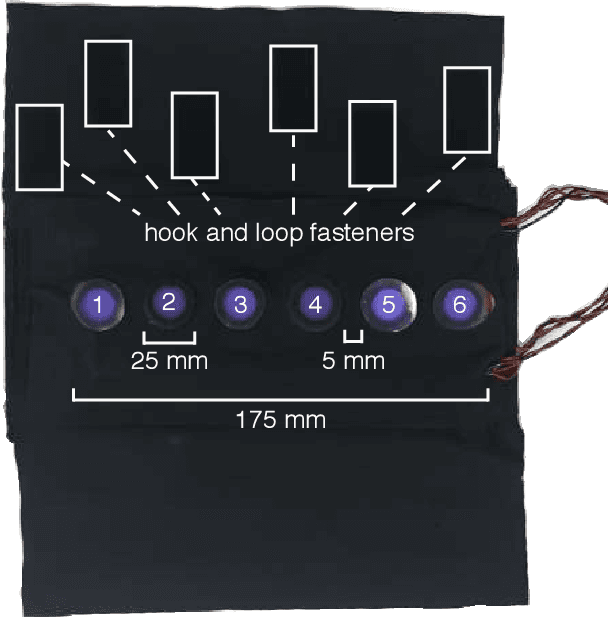
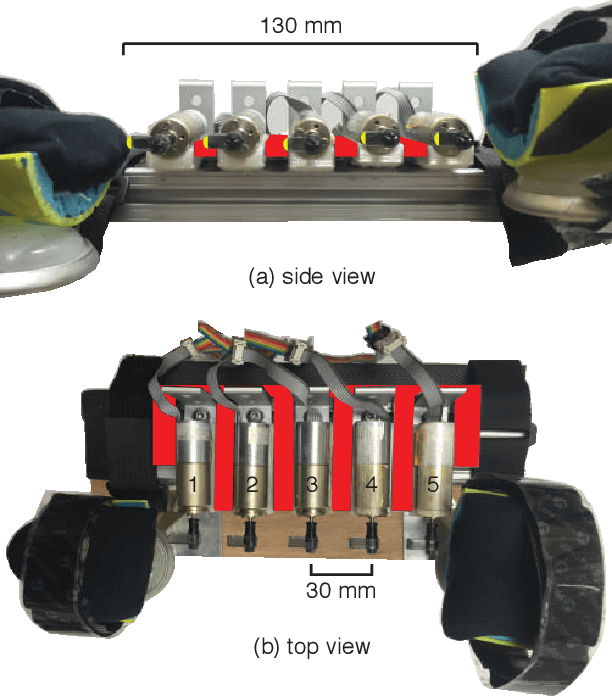
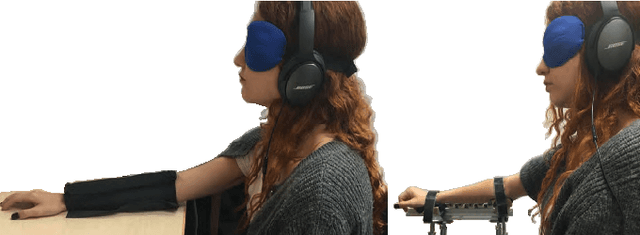

Abstract:A common and effective form of social touch is stroking on the forearm. We seek to replicate this stroking sensation using haptic illusions. This work compares two methods that provide sequential discrete stimulation: sequential normal indentation and sequential lateral skin-slip using discrete actuators. Our goals are to understand which form of stimulation more effectively creates a continuous stroking sensation, and how many discrete contact points are needed. We performed a study with 20 participants in which they rated sensations from the haptic devices on continuity and pleasantness. We found that lateral skin-slip created a more continuous sensation, and decreasing the number of contact points decreased the continuity. These results inform the design of future wearable haptic devices and the creation of haptic signals for effective social communication.
Understanding Continuous and Pleasant Linear Sensations on the Forearm from a Sequential Discrete Lateral Skin-Slip Haptic Device
Sep 03, 2019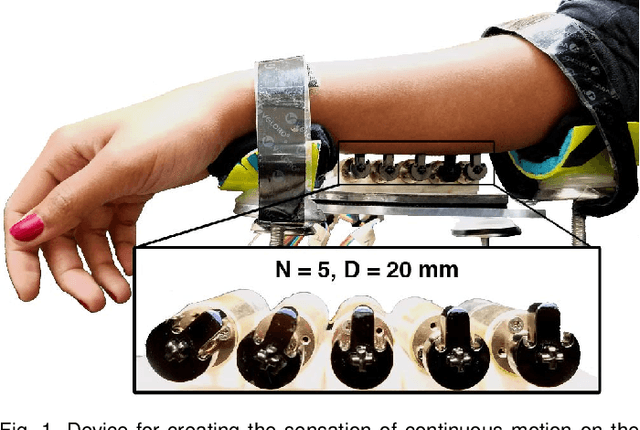

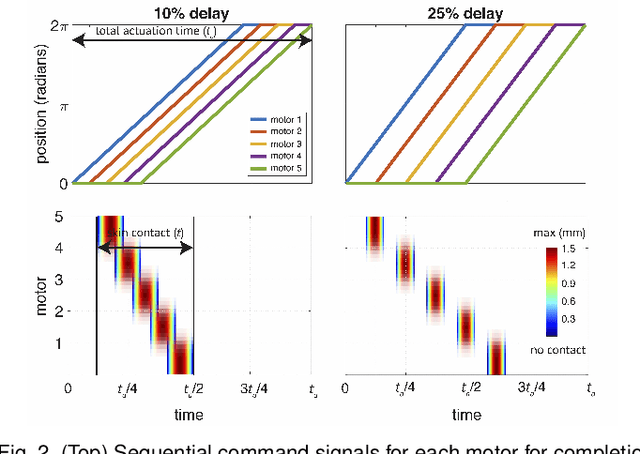

Abstract:A continuous stroking sensation on the skin can convey messages or emotion cues. We seek to induce this sensation using a combination of illusory motion and lateral stroking via a haptic device. Our system provides discrete lateral skin-slip on the forearm with rotating tactors, which independently provide lateral skin-slip in a timed sequence. We vary the sensation by changing the angular velocity and delay between adjacent tactors, such that the apparent speed of the perceived stroke ranges from 2.5 to 48.2 cm/s. We investigated which actuation parameters create the most pleasant and continuous sensations through a user study with 16 participants. On average, the sensations were rated by participants as both continuous and pleasant. The most continuous and pleasant sensations were created by apparent speeds of 7.7 and 5.1 cm/s, respectively. We also investigated the effect of spacing between contact points on the pleasantness and continuity of the stroking sensation, and found that the users experience a pleasant and continuous linear sensation even when the space between contact points is relatively large (40 mm). Understanding how sequential discrete lateral skin-slip creates continuous linear sensations can influence the design and control of future wearable haptic devices.
 Add to Chrome
Add to Chrome Add to Firefox
Add to Firefox Add to Edge
Add to Edge